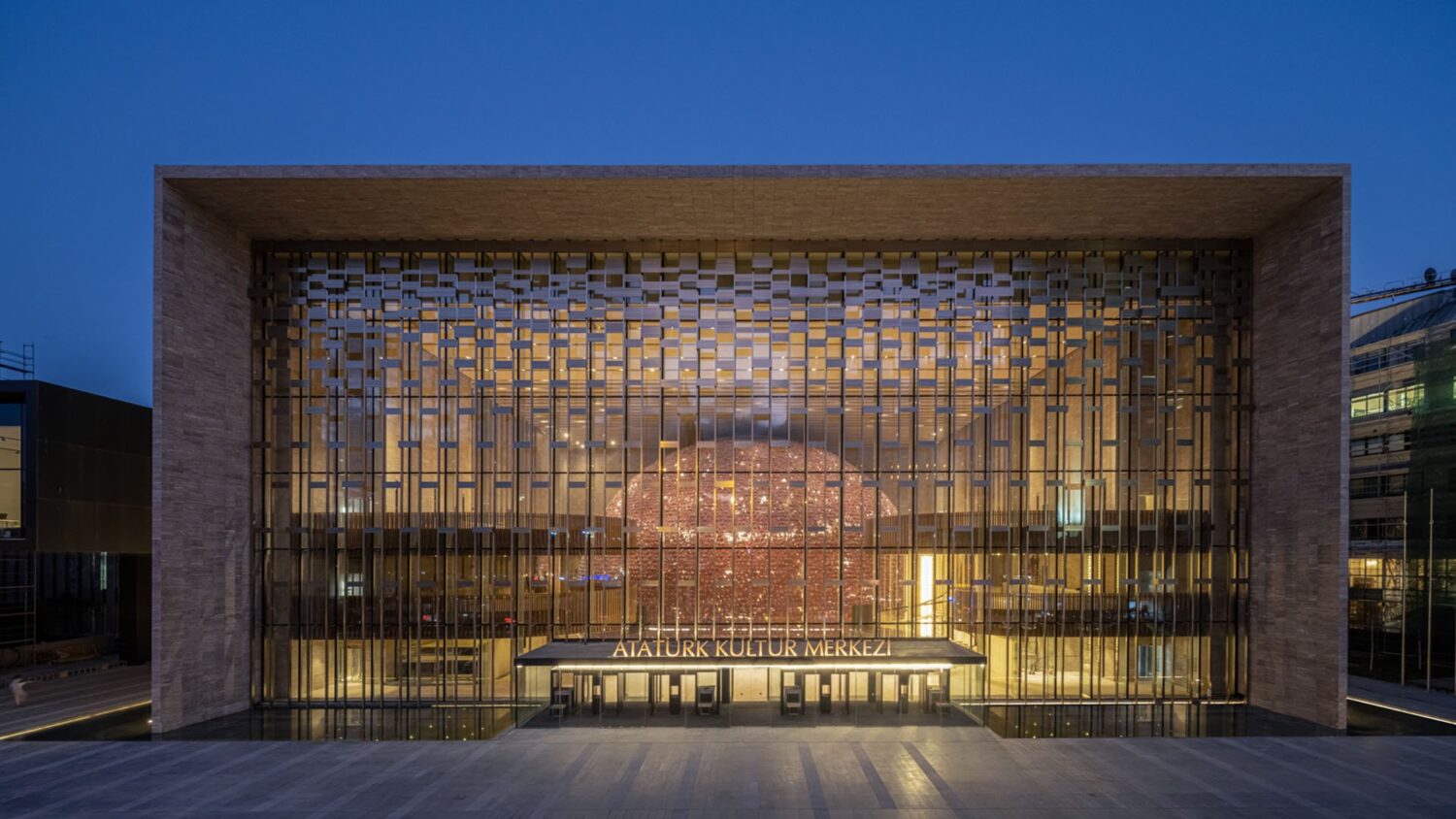If Istanbul has a special magic, it is the magic of the eclectic layers of architecture, people, coexistence, religions and even urban poetry.
While walking through the small streets, you can see at the same time a synagogue, a Catholic church, a black cat, a cocktail bar where Hemingway once stayed, as well as the latest modernist creations of world architecture.
One of the most interesting and multifunctional buildings of the city is definitely the Atatürk Cultural Center in the very heart of Istanbul on the legendary Taksim Square.
Atatürk Kültür Merkezi, as it was originally called, is probably also one of the most impressive cultural buildings in Europe.
In addition, she has an equally interesting story.
According to the regulation plan of Istanbul, drawn up by the French architect and city planner Henri Prost between 1936-1937, Topçu Kışlası (Artillery Barracks) and the nearby cemeteries will be turned into a park, and the opera house will be officially opened on Taksim Square.
At Prost’s suggestion, French architect Auguste Perre arrived in Istanbul to oversee the opera project, but it could never be completed due to the deepening World War II.
Later, in 1946, the building also could not be completed due to lack of funds. The Opera House was officially opened on April 12, 1969, with the design of the chief architect Hayati Tabanlaoglu, to stage the plays of the State Opera and Ballet and the State Theaters.
It was later partially damaged by a fire in 1970 that broke out on stage during a production of Arthur Miller’s play Witch Hunt.
In the late 1970s, the building was definitively the city’s most modern and elite cultural center in which performing arts could be presented – it housed not only various spaces such as halls and stages on which productions could be adapted and operas, but the building carried the spirit of modernity because of its functionality. Even then there were elevators, mechanized systems, huge capacity in places.
Until the year 2000, the building functioned in this form, but gradually its qualities were lost, as time had its influence and a large part of its functionalities were amortized.
Thus, a project has been announced to the Turkish public, which aims to preserve the appearance and structure of the building, but to renovate it and make it a worthy modern cultural and architectural landmark. This project was launched alongside the European Capital of Culture 2010.
In 2017, Erdogan announced that the project would be completely rebuilt in a new building in Taksim Square.
The Atatürk Cultural Center will finally open its doors to visitors with a ceremony on October 29, 2021, and it includes the following elements: 2,040-seat opera house, 781-seat theater hall, gallery, multi-purpose hall, children’s art center, music platform, studio for music recordings, a specialist library focusing mainly on architecture, design and fashion, and cinema.
The building’s library is stunningly beautiful and one of those places where you’d spend hours and nights just discovering new and new treasures.
It contains limited editions for art, design, fashion and cinema. A must-see is also the music museum, which is dedicated to the musical traditions of Turkey and the specific instruments of the region’s music, but also to the greatest Turkish composers, conductors, opera singers, ballerinas and artists who have toured in within different eras in this emblematic building for Istanbul.
The leading architectural firm that drove the project is Tabanlıoğlu Architecture/ Desmus, one of the leading architectural studios in Turkey, who also designed the National Theater building in Lagos, Nigeria, as well as halls and cultural centers in Ankara and other cities in Turkey.












